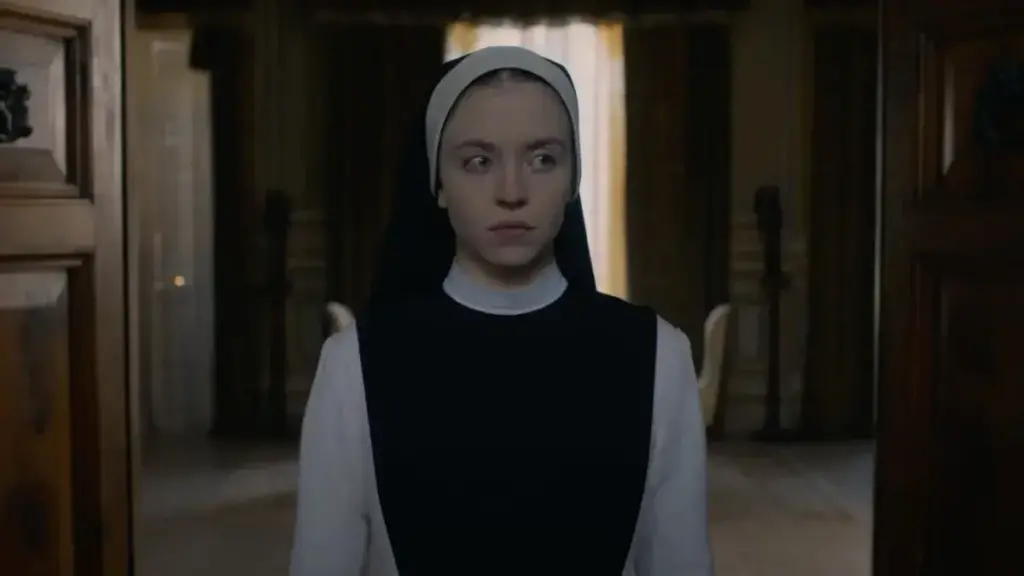Table of Contents
- 1 Historical Context of the Film
- 2 Plot Summary of “The Godfather”
- 3 Themes and Symbolism in “The Godfather”
- 4 Analysis of the Characters in “The Godfather”
- 5 Cinematography and Visual Storytelling in “The Godfather”
- 6 Impact and Legacy of “The Godfather”
- 7 Behind the Scenes of “The Godfather”
- 8 The Godfather Trilogy: A Comparison and Discussion
- 9 Why “The Godfather” Remains a Cinematic Masterpiece
- 10 Author
Few films in the pantheon of cinematic masterpieces can lay claim to the same level of cultural significance as The Godfather. The Godfather: Another epic crime-drama, it is a beautifully well knit story, scripted by Mario Puzo and helmed by Francis Ford Coppola in 1972. He goes on a ride of love in the world of the mafia, the family matters, and the crime that this can cause with The Godfather.
With a cast headlined by Marlon Brando, Al Pacino, and James Caan, the film replicated timeless characters, now iconic figures in pop culture. Well with so many quotable lines, bang-bang shoot-em-up scenes, and a oh so glorious story, The Godfather keeps a audiences attention and high up there on the list of the best movies of all time.
In this article, we will delve into the making of “The Godfather,” as well as its cinematic significance and enduring influence. We are talking about what makes this Enduring Classic of Influence from the inception of the film to the reviews of the critics. Good, now go get a cannoli and let’s dive in to “The Godfather.”

Historical Context of the Film
In order to fully understand the importance of The Godfather, however, one has to consider when it was released. The 1970s, and especially the early 70s stands as evidence of American cinema, and how it was starting to strive for more complicated, character films. The opportunities to question traditional values and far worse, the grimmest, darkest social issues were gold dust to audiences. It was in this period that The Godfather was released, a film which redefined what storytelling could be.
The film is set in the aftermath of World War II, a time that saw the rise of organized crime in America. It’s an expression of a society’s worry, of a society under economic pressure and power conflicts. By portraying the mafia as a detailed system with layers, The Godfather makes these characters feel human, causing any viewer to question their sense of right and wrong. The film is unique in presenting an opportunity to view family values against violent traits of the human character, thus rendering a smarty analysis of human nature.
Plot Summary of “The Godfather”
Centering on the epic gangster saga of the Corleone crime family, “The Godfather”—a part Italian, part-American-Dream family led by Vito Corleone (Marlon Brando)— It starts with Vito’s daughter Connie’s wedding, where it showcases the different family members. A well-respected and feared figure in the underworld, Vito (known as the Godfather)
The power struggles among the Corleone family and their complications with rival mafia families all play out in this tale. With his bought-and-paid policy compromised, the reluctant Michael (Al Pacino), Vito’s youngest son, is reluctantly pulled into the crime family after an assassination attempt. This transformation from the reluctant outsider [in Michael] — to the ruthless leader — is truly the heart of the narrative of the film.
Based on the novel of the same name, “The Godfather” is a tale of loyalty and betrayal and the price of ultimate power. A sweeping epic that stretches from America to the outer reaches of the galaxy, it is a big, sprawling and explosive movie heaving with large scale action and unbelievable set pieces but still surprisingly nuanced, exploring themes of family, honor and the corrupting influence of absolute power. With an intricate plot, the viewers are kept in-tune throughout as partnerships are made, alliances are broken, and the twists and turns have the characters making their way through the crime syndicates of the underworld.
Themes and Symbolism in “The Godfather”
“The Godfather” is rich with themes and symbolism that add depth and meaning to the story. One of the central themes explored in the film is the tension between loyalty to family and loyalty to oneself. The Corleone family is bound by a strong sense of loyalty and honor, but this loyalty often comes at a great personal cost. Characters are torn between their duty to the family and their desire for personal freedom, leading to tragic consequences.
Another theme that permeates the film is the concept of power and its corrupting influence. As the characters strive for power and control, they become entangled in a web of violence and deceit. The film portrays power as a double-edged sword, capable of both elevating and destroying those who possess it.
Symbolism also plays a significant role in “The Godfather.” The recurring image of the orange, for example, is used to foreshadow death and signal impending danger. The use of dark and shadowy lighting creates a sense of foreboding, reflecting the moral ambiguity of the characters and their actions.
Analysis of the Characters in “The Godfather”
One of the strengths of The Godfather is its rich, multilayered characters From moral fiber to physical traits, to motivations, all are well thought out and fully developed characters. Marlon Brando’s Vito Corleone stands as one of the iconic performances in cinema history, playing a man who operates in two worlds as the father who loves his family and as one of most powerful organized crime figures still lives.
Pacino in the role of Michael Corleone is as compelling as Brando is. We watch as Michael goes from a war hero with a promising future to a manipulative and ruthless boss. Pacino’s performance is a masterclass in subtlety, embodying the emotional turmoil of a father battling his own demons to begin with, and then confronted with what he’s capable of and how far he’s willing to go.
James Caan gives a fiery performance as the eldest son Sonny Corleone, and Robert Duvall is pitch-perfect as the adopted son and family consigliere Tom Hagen. Each character has the perspective they have, and it enriches the whole.
Cinematography and Visual Storytelling in “The Godfather”
The cinematography in “The Godfather” is a masterclass in visual storytelling. The film’s director of photography, Gordon Willis, skillfully uses light and shadow to create a sense of atmosphere and tension. The use of low-key lighting and deep shadows adds to the film’s noir aesthetic, emphasizing the moral ambiguity of the characters and the dark world they inhabit.
The iconic opening shot of the film, featuring Bonasera pleading for justice in Vito Corleone’s office, sets the tone for the entire movie. The combination of long takes and slow camera movements creates a sense of intimacy, allowing the audience to immerse themselves in the characters’ emotions and motivations.
The use of color is also significant in “The Godfather.” The warm tones of the Corleone family’s home contrast with the cold and sterile environments of their rivals, reflecting the stark differences in values and priorities.
Impact and Legacy of “The Godfather”
“The Godfather” had a profound impact on both cinema and popular culture. It revolutionized the gangster genre, setting a new standard for storytelling and character development. The film’s success paved the way for other mafia-themed movies and TV shows, influencing a generation of filmmakers and actors.
“The Godfather” also introduced audiences to the concept of the anti-hero, a morally ambiguous protagonist who defies traditional notions of right and wrong. This archetype has since become a staple in storytelling, challenging audiences to question their own moral compass and empathize with characters who exist in the gray areas of morality.
The film’s impact can still be felt today, with references and homages to indratogel appearing in various forms of media. Its iconic quotes, such as “I’m gonna make him an offer he can’t refuse,” have become engrained in popular culture, transcending the boundaries of the film itself.

Behind the Scenes of “The Godfather”
The making of “The Godfather” was not without its challenges. The film faced numerous production hurdles, including conflicts between the studio and director Francis Ford Coppola. Coppola’s vision for the film clashed with the studio’s expectations, leading to creative differences and budgetary concerns.
However, despite these obstacles, the cast and crew persevered, creating a film that would go on to become a cinematic masterpiece. The dedication and passion displayed by everyone involved in the production contributed to the film’s enduring legacy.
The Godfather Trilogy: A Comparison and Discussion
“The Godfather” was followed by two sequels, “The Godfather Part II” (1974) and “The Godfather Part III” (1990). While the first film is widely regarded as a masterpiece, opinions on the sequels are more divided. Some view “The Godfather Part II” as a worthy successor, deepening the themes and characters introduced in the first film. Others feel that “The Godfather Part III” falls short of its predecessors, with a convoluted plot and weaker performances.
Regardless of individual opinions, the trilogy as a whole represents an epic saga that spans generations. It offers a comprehensive exploration of the Corleone family and their legacy, further cementing “The Godfather” as one of the greatest film franchises of all time.
Why “The Godfather” Remains a Cinematic Masterpiece
“The Godfather” continues to captivate audiences and critics alike, almost five decades after its release. Its compelling storytelling, unforgettable performances, and thought-provoking themes have solidified its place in cinematic history.
The film’s enduring legacy can be attributed to its ability to transcend the gangster genre and explore universal themes of power, family, and morality. It is a testament to the power of storytelling and the impact it can have on audiences.
Whether you’re a fan of crime dramas or simply appreciate great cinema, “The Godfather” is a must-watch film that has stood the test of time. So, next time you find yourself in the mood for a captivating and thought-provoking cinematic experience, grab a copy of “The Godfather” and immerse yourself in the fascinating world of the Corleone family. You won’t be disappointed.
This blog article has taken an in-depth look at the making of “The Godfather,” exploring its impact on cinema and its enduring legacy. We have delved into the historical context of the film, provided a plot summary, analyzed its themes and symbolism, discussed the complex characters, examined the cinematography and visual storytelling techniques used, explored its impact and legacy, looked behind the scenes of the production, compared the Godfather Trilogy, and concluded on why “The Godfather” remains a cinematic masterpiece. We hope this article has provided you with a comprehensive understanding and appreciation of this mafia masterpiece.
Also read: SpongeBob SquarePants: Kartun Klasik yang Menginspirasi Generasi Baru



